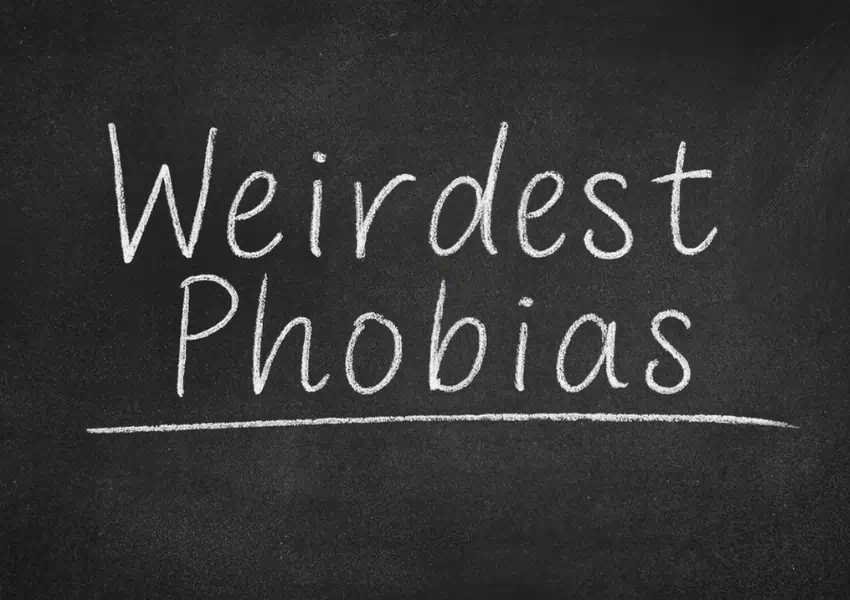Weirdest Phobias: 11 Rare Fears That Are Completely Real

Everybody is afraid of something. While the majority of these fears are widespread, well-known, and fundamental to survival, they can quickly turn sour. When fear extends beyond its protective purpose, it can become maladaptive.
These maladies are known as phobias. In contrast to ordinary fear, phobias can cause problems in day-to-day living, forcing people to take drastic measures to avoid particular things, circumstances, or experiences.
A phobia is a type of anxiety disorder where individuals either try to avoid the thing that triggers the fear or endure it with great anxiety and distress.
Some of them might sound bizarre at first glance, but they are very real for the people who experience them.
The following are some of the weirdest or rarest phobias people actually live with.
Spectrophobia: Fear of Mirrors or Reflections
People with spectrophobia experience an intense fear of their own reflection. Superstitions, traumatic experiences, or cultural beliefs linking mirrors to bad luck or the paranormal can all contribute to its development.
Octophobia: Fear of the Number Eight
People with octophobia experience anxiety when they think about or see the number 8. People associate the uneasiness behind the number with bad experiences, numerology, or even the loops of the shape.
Chorophobia: Fear of Dancing
This phobia frequently stems from social anxiety or a fear of embarrassment. It goes beyond simply not liking dance or, as the name says, fear of dance. People suffering from chorophobia panic or suffer notable distress at the mere thought of dancing or watching others dance.
Turophobia: Fear of Cheese
Despite its seemingly harmless appearance, cheese can provoke severe reactions in people who are turophobic. People suffering from this phobia react strongly to its texture, smell, or even sight. Trauma related to food or childhood experience plausibly causes this phobia.
Omphalophobia: Fear of Belly Buttons
People with this phobia show discomfort or disgust towards their own or others’ belly buttons, often going out of their way to avoid touching or even looking at their navels.
Ephebiphobia: Fear of Teenagers
This phobia goes beyond a mere dislike of teenagers. It reflects a deep-rooted fear of adolescents, stemming from stereotypes, past bullying experiences, or other negative encounters with youth.
Dextrophobia: Fear of Things on the Right Side
People who suffer from dextrophobia exhibit a preference for objects to be on their left, experiencing anxiety or distress when you position them to their right. It also often connects to obsessive-compulsive tendencies.
Phobophobia: Fear of Fear
This phobia characterises anxiety or the fear of developing another phobia. For people who suffer from it, the anticipation of fear turns into an even more upsetting experience than the actual trigger.
Hippopotomonstrosesquippedaliophobia: Fear of Long Words
Ironically, this extremely long word names the fear of long words. This phobia is typically caused by a dread of reading aloud, giving public speeches, or being mocked for mispronunciations.
Xanthophobia: Fear of the Colour Yellow
Whether it’s yellow flowers, clothing, or even sunlight, this phobia creates intense discomfort when an individual comes across the colour yellow. It may stem from traumatic associations with the colour or sometimes a cultural symbolism it might have.
Treatment for Phobias
Although phobias can feel overwhelming, effective treatments help people manage or even overcome their fears. These options include:
Cognitive Behaviour Therapy
Cognitive behaviour therapy is a type of psychotherapy that helps one understand and control the thoughts and emotions behind a phobia. This structured talk therapy can help one unlearn negative thoughts and behaviours associated with the particular phobia, improving their fear.
Exposure Therapy
Exposure therapy, or desensitisation, helps through repetitive exposure to the elements of phobia under a controlled environment. This, over time, allows people to learn to manage their specific fear and its symptoms, gradually decreasing their phobia.
Medication
Many medications dealing with anxiety, fear, and other overwhelming emotions are now available to help people take their first steps toward dealing with phobias. It must be noted, though, that medications must be taken under strict supervision and only after consulting with a psychiatrist.
What Next?
Recognising a phobia is the first step toward recovery. With treatment, people can regain control of their lives. Phobias can feel overwhelming, often dictating a person’s life, but you must remember that they can be managed and even overcome.
You might also like:

